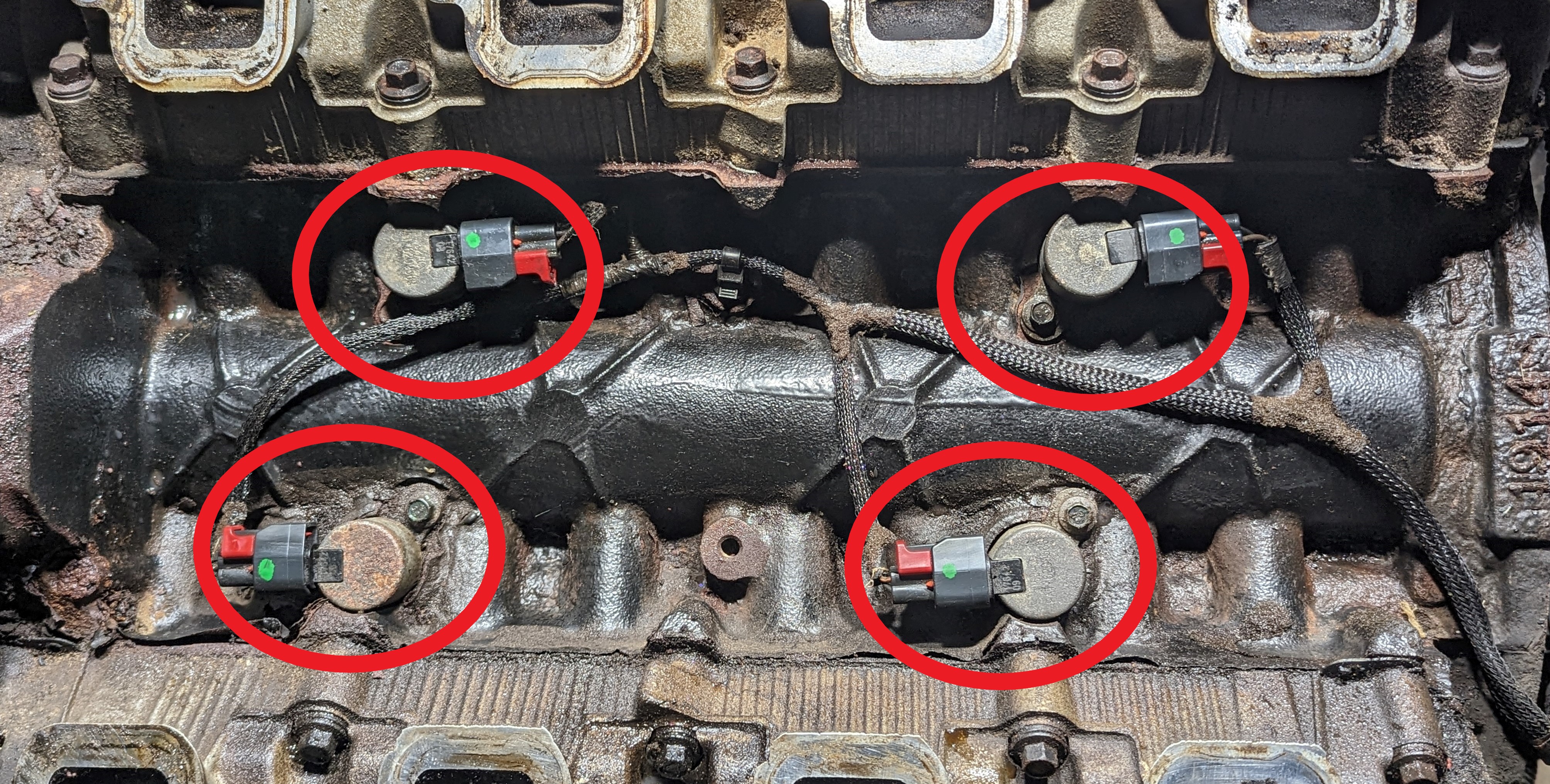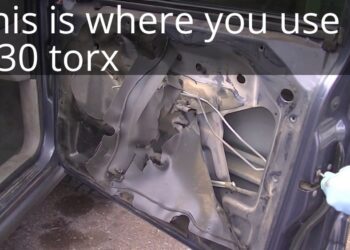If you own a Dodge Ram with a HEMI engine, you might have already heard about MDS problems—and maybe even experienced some yourself. The Multi-Displacement System (MDS) is supposed to improve fuel efficiency by shutting down cylinders when full power isn’t needed.
But when it starts acting up, your truck can show rough idling, engine knocking, loss of power, and even warning lights on your dashboard. These issues can leave you frustrated and wondering if your Ram is reliable for the long haul.
You’ll learn how to spot common MDS problems, understand what causes them, and discover practical solutions to keep your truck running smoothly. Keep reading to protect your investment and avoid costly repairs down the road.
Mds System Basics
The Multi-Displacement System (MDS) in Dodge Ram trucks is designed to improve fuel efficiency. It does this by shutting down half of the engine’s cylinders under light load conditions. This technology helps save fuel without sacrificing power when you need it.
Understanding the basics of the MDS system is important for any Dodge Ram owner. Knowing how it works and its benefits can help you spot problems early. It also explains why some drivers experience issues related to the MDS system.
How Mds Works
The MDS system activates when the truck is cruising or under light load. It closes the valves in four of the eight cylinders. This reduces fuel consumption by running the engine on only half its cylinders. When more power is needed, the system quickly reactivates all cylinders. This switch happens smoothly to keep the driving experience steady.
Benefits Of Mds
MDS improves fuel economy by reducing fuel used during light driving. It lowers emissions by using fewer cylinders. This helps the truck meet environmental standards. The system also extends the engine’s life by reducing wear during normal driving. Drivers enjoy good power when needed with better fuel savings at other times.
Common Dodge Ram Mds Issues
The Dodge Ram’s Multi-Displacement System (MDS) aims to improve fuel efficiency by deactivating cylinders when full power is not needed. Despite its benefits, many drivers report issues that affect engine performance and reliability. Understanding these common problems can help you identify symptoms early and maintain your truck better.
Lifter Failure And Camshaft Wear
Lifter failure is a frequent issue with Dodge Ram MDS engines. When lifters fail, they cause uneven wear on the camshaft lobes. This leads to a ticking noise often called the “Hemi tick.” Over time, the camshaft can wear down, reducing engine efficiency and causing rough operation. Repairing or replacing lifters and camshafts is necessary to restore smooth engine function.
Mds Solenoid Problems
The MDS solenoids control which cylinders deactivate. These solenoids can malfunction due to dirt, wear, or electrical faults. When solenoids fail, drivers may notice rough idling, engine knocking, or loss of power. The check engine light often turns on as well. Replacing faulty solenoids usually resolves these issues and improves engine smoothness.
Engine Stalling And Hesitation
Some Dodge Ram owners experience engine stalling or hesitation while driving. These symptoms often occur when the MDS system activates or deactivates cylinders. The engine may feel like it is struggling to accelerate or may suddenly lose power. Stalling can create dangerous situations on the road and should be inspected promptly by a mechanic.
Electrical And Transmission Troubles
Electrical problems linked to the MDS can cause erratic engine behavior and sensor errors. Transmission issues sometimes appear in trucks with MDS engines, including rough shifting or slipping. These troubles may result from faulty wiring, sensor faults, or software glitches. Diagnosing electrical and transmission concerns requires specialized tools and expertise.
Fuel Economy Drops
MDS is designed to save fuel by shutting off cylinders. When the system has problems, fuel economy often decreases instead. Issues like solenoid failure, lifter wear, or engine hesitation cause the engine to run inefficiently. Owners may notice more frequent trips to the gas station and higher fuel costs. Fixing MDS faults can help restore better mileage.
Symptoms Of Mds Problems
The Multi-Displacement System (MDS) in Dodge Ram trucks aims to improve fuel efficiency by shutting down some engine cylinders. Problems with the MDS can cause several noticeable symptoms. Recognizing these symptoms early can help prevent more serious engine damage.
Symptoms of MDS problems often affect engine performance and driving comfort. Drivers may experience unusual noises, vibrations, and changes in power and fuel use. The check engine light may also come on. Understanding these signs helps in diagnosing MDS issues quickly.
Rough Idle And Engine Vibration
A rough idle is common when MDS malfunctions. The engine may shake or run unevenly while stopped. Engine vibration can also increase, especially at steady speeds. This happens because the system fails to switch cylinders smoothly.
Knocking And Pinging Noises
Knocking or pinging sounds can come from the engine. These noises result from improper cylinder activation. The combustion process becomes uneven, causing the engine to make unusual sounds. This symptom signals that the MDS is not working correctly.
Loss Of Power
The vehicle may lose power or feel sluggish. Acceleration slows down, and the engine struggles under load. This loss of power occurs when cylinders do not activate as needed. It reduces the truck’s overall performance and driving experience.
Increased Fuel Consumption
Fuel efficiency drops when the MDS system fails. More fuel is burned because the engine runs with all cylinders active constantly. This increase in fuel use raises operating costs and reduces the benefit of having MDS in the first place.
Check Engine Light Indicators
The check engine light often turns on during MDS problems. This warning signals the engine control unit detects an issue. Diagnostics can reveal codes related to cylinder deactivation or solenoid failures. Ignoring this light can lead to bigger engine troubles.

Credit: www.youtube.com
Identifying Bad Mds Solenoids
Identifying bad MDS solenoids in Dodge Ram trucks is key to preventing engine issues. The Multi-Displacement System (MDS) solenoids control cylinder deactivation for better fuel economy. Faulty solenoids can cause misfires and rough engine performance. Knowing how to spot problems early helps avoid costly repairs and keeps the truck running smoothly.
Testing Methods
Start by listening for unusual noises from the engine. Use a scan tool to check for error codes related to MDS. A multimeter can test the solenoid’s electrical resistance. Comparing readings to factory specs shows if a solenoid is failing. Physically inspecting the solenoids for damage or leaks also helps identify problems.
Common Misfire Causes
Faulty MDS solenoids often cause cylinder misfires. Dirt or carbon buildup can block solenoid valves. Electrical wiring issues may disrupt solenoid signals. Worn solenoids fail to deactivate cylinders properly. This leads to uneven engine firing and loss of power.
Signs To Watch For
Rough idle or shaking when the truck is stopped is a major warning sign. The check engine light may turn on without clear reason. Engine knocking or pinging sounds indicate combustion issues. You may notice sluggish acceleration or reduced fuel efficiency. Increased vibrations while driving can also point to bad solenoids.
Fixing Mds Issues
Fixing MDS issues on a Dodge Ram requires a clear approach. The Multi-Displacement System (MDS) can cause engine problems if parts fail or software glitches occur. Addressing these problems improves engine performance and fuel efficiency. Repair steps include replacing faulty components and updating software. Some owners choose to disable MDS with specific kits to avoid recurring faults. Below are key methods to fix MDS problems effectively.
Solenoid Replacement
The MDS solenoid controls cylinder deactivation. A bad solenoid causes rough idle and engine noise. Replacing the faulty solenoid restores smooth engine operation. It is a common fix for MDS-related issues. Always use OEM or high-quality solenoids for best results. This repair usually requires removing the valve covers. Testing the new solenoid ensures the problem is resolved.
Lifter And Camshaft Repairs
Lifter failure leads to camshaft wear, causing the “Hemi tick” sound. Worn lifters affect cylinder deactivation and engine timing. Repairing or replacing lifters and camshafts stops engine noise and prevents further damage. This fix is more complex and may need professional help. Proper lubrication and regular oil changes help avoid lifter problems. Addressing these repairs improves engine reliability.
Software Updates And Tunes
Software glitches can cause MDS malfunctions. Updating the engine control unit (ECU) software fixes bugs and improves MDS function. Some tuners offer custom software to optimize MDS performance. These updates can reduce unwanted cylinder deactivation problems. Always get software updates from trusted sources. A proper tune enhances fuel economy and engine smoothness.
Using Mds Delete Kits
MDS delete kits disable the cylinder deactivation system completely. This option stops MDS problems but increases fuel consumption. Kits include plugs and parts to block MDS solenoids. Installing these kits removes the “Hemi tick” noise and rough idle. Some owners prefer this for long-term reliability. Consider the trade-offs before choosing to delete MDS.

Credit: help.summitracing.com
Temporarily Disabling Mds
Temporarily disabling the Multi-Displacement System (MDS) on Dodge Ram trucks can help manage some common MDS-related problems. This feature allows drivers to turn off MDS functions without permanent modifications. Disabling MDS temporarily can improve engine performance during towing or heavy loads. It also reduces the risk of engine hesitation and rough idling caused by MDS activation. Below are ways to disable MDS temporarily and their pros and cons.
Manual Shift Mode
Manual Shift Mode lets you control gear changes manually. Using this mode, the truck avoids switching cylinders automatically. This stops MDS from activating during your drive. To engage Manual Shift Mode, shift the gear lever into manual or low mode. This method is easy and reversible. It prevents cylinder deactivation by keeping the engine in full power mode. However, it may reduce fuel efficiency since MDS remains off.
Tow/haul Mode
Tow/Haul Mode is designed for towing heavy loads or hauling cargo. Activating this mode temporarily disables MDS to prevent power loss. It changes transmission shift points for better control and engine response. Tow/Haul mode also helps reduce engine strain during tough driving conditions. You can turn it on by pressing the Tow/Haul button on the dashboard. This mode balances power needs with some fuel economy trade-offs.
Benefits And Limitations
Disabling MDS temporarily can improve engine smoothness and power delivery. It helps avoid rough idling and engine knocking caused by faulty MDS components. Drivers gain better control during towing or heavy acceleration. On the downside, fuel consumption may increase without MDS active. Some drivers might notice reduced efficiency and higher emissions. Temporary disabling also does not fix underlying MDS hardware problems. It is a useful short-term solution but not a permanent repair.
Model Years With Notable Mds Problems
Several Dodge Ram model years show notable problems with the Multi-Displacement System (MDS). These issues often affect engine performance and reliability. Understanding which years had the most complaints helps owners and buyers make informed decisions. Below are some key model years with reported MDS problems.
2003 Hemi Engine Concerns
The 2003 Dodge Ram with the Hemi engine faced multiple MDS issues. Owners reported exhaust manifold bolts breaking. This caused leaks and engine damage. Transmission failures were common in this year. Some trucks experienced stalling and hesitation after refueling. Several recalls addressed these problems but did not fully fix them.
2010-2013 Engine And Transmission Issues
Models from 2010 to 2013 showed frequent engine stalling linked to MDS problems. Lifter and camshaft wear caused the famous “Hemi tick” noise. Poor fuel economy and rough idling were common complaints. Transmission issues appeared alongside engine troubles. These problems led to costly repairs for many owners.
2011-2012 Specific Challenges
The 2011 and 2012 Dodge Ram trucks had specific MDS challenges. Owners noticed rough idle and engine knocking. Some reported check engine lights related to MDS solenoids. These years also had cases of power loss and increased vibration. Problems often required replacing solenoids or disabling the MDS system.
2013-2016 Electrical And Engine Problems
From 2013 to 2016, Dodge Ram trucks experienced more electrical issues linked to MDS. Faulty wiring caused engine malfunctions and transmission faults. Engine stumbling and misfires were reported. Some drivers faced sudden power loss during driving. Repairs included fixing electrical connections and sometimes reprogramming the vehicle’s computer.
Credit: www.ebay.com
Preventive Maintenance Tips
Preventive maintenance plays a key role in reducing Dodge Ram MDS problems. Small steps can keep the Multi-Displacement System working smoothly. Regular care helps avoid costly repairs and extends engine life.
Focus on simple routines that protect your engine and improve performance. Understanding the main maintenance tips can save time and money.
Regular Inspections
Check the MDS solenoids and wiring often. Look for signs of wear or damage. Early detection of issues can stop bigger problems.
Inspect engine mounts and sensors connected to the MDS system. Keep an eye on engine idle and listen for unusual sounds.
Timely Repairs
Fix any MDS-related faults quickly. Delaying repairs can cause engine damage. Replace faulty solenoids or sensors as soon as problems appear.
Follow the manufacturer’s service schedule for the best results. Use trusted mechanics for repair work to ensure quality.
Fuel And Oil Quality
Use high-quality fuel to prevent carbon build-up in the cylinders. Clean fuel improves combustion and reduces MDS stress.
Change engine oil regularly with the recommended grade. Good oil protects moving parts and keeps the MDS system lubricated.
Avoiding Common Triggers
Avoid short trips that do not allow the engine to reach full temperature. Cold starts can strain the MDS system.
Minimize rapid acceleration and heavy towing often. These actions increase engine load and may cause MDS faults.
Keep the engine cool by maintaining the cooling system. Overheating can trigger MDS shutdown and damage engine parts.
Frequently Asked Questions
What Are The Problems With The Hemi Mds?
The Hemi MDS causes lifter failure, camshaft wear, rough idle, engine knocking, loss of power, vibrations, and reduced fuel efficiency. Electrical and transmission issues also occur in some model years. These problems can trigger check engine lights and poor acceleration.
What Years To Avoid For The 5.7 Hemi?
Avoid 2003 models due to transmission and engine issues. Skip 2010-2013 for stalling and lifter wear. Be cautious with 2013-2016 for electrical and transmission problems.
How To Tell If A Mds Solenoid Is Bad?
A bad MDS solenoid causes rough idle, engine knocking, loss of power, check engine light, vibrations, and poor fuel efficiency.
Can You Turn Off Ram Mds?
You cannot fully turn off RAM MDS without hardware modifications. Some opt for MDS delete kits to disable it.
What Are Common Dodge Ram Mds Problems?
Dodge Ram MDS issues include rough idle, engine knocking, and loss of power.
Conclusion
Dodge Ram MDS problems can affect engine performance and fuel efficiency. Watch for rough idling, knocking, or loss of power. These signs often mean the MDS solenoids need attention. Regular maintenance helps avoid costly repairs later. Knowing these issues makes your truck more reliable.
Stay alert to symptoms and act quickly. Your Dodge Ram will run smoother and last longer. Simple care can prevent many common MDS troubles. Keep your truck healthy and enjoy better driving every day.















